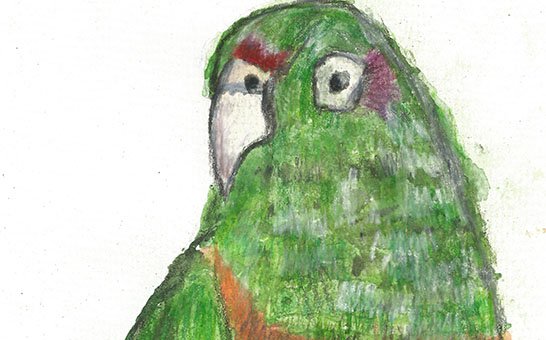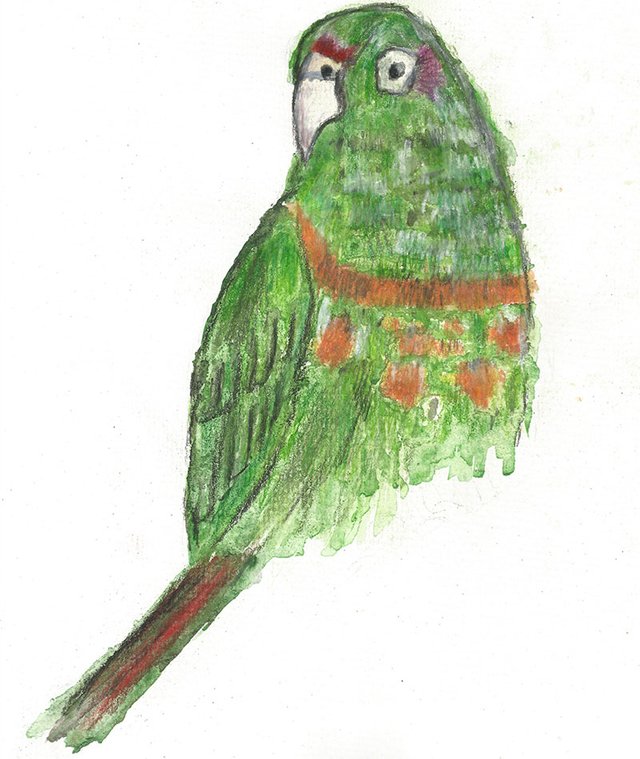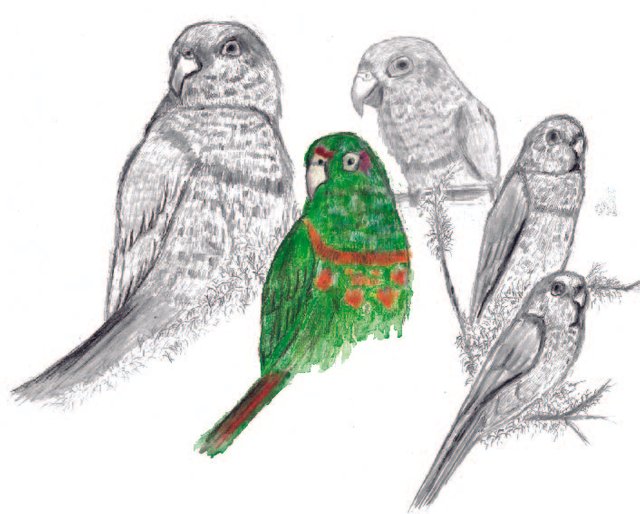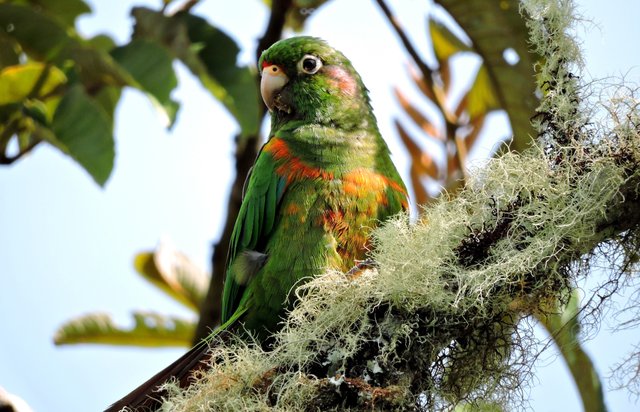
The genus Pyrrhura - contains a characteristic that will help in its identification, and not only of this parakeet but also of all the parakeets of the genus Pyrrhura and it is its fast flight next to calls or screaming sounds. There is an interesting investigation carried out by Bret M. Whitney, where he indicates about the flight of this genus with soft undulations but as fast as a "torpedo". Identifying in flight will be advantageous for the bird watcher, because parakeets in general, move a lot and spend little time perched. In Latin America the hunting pressure on macaws, parakeets and parrots is remote time and is already an imprint on their genes, so it will be very difficult for you to see them foraging quietly. They fly away, at the slightest presence of predators including man, so identifying by flight helps.

The known reason for its disappearance, and that it is a critically endangered species, is the development of human settlements and the use of its spaces for the development of settlements and pressure for crops. According to the study by Botero and others (2011), the flocks do not exceed ten individuals.
If you look at the ebird monitoring tool, as of the date of this note, in November 2018 a bird watcher recorded the species on its way out, you can "think then about the feasibility of being able to see it as a critically endangered species, so you can have hope if you want to record it when you leave the field in the Cuchilla de San Lorenzo sector, a birding area of the Sierra Nevada de Santa Marta.

The organization that has been most dedicated in Colombia to the preservation of this parakeet is PROAVES.
About the illustration - in pencil and watercolor - made by me and that I leave in this note, highlights another feature that identifies the species - a red mark near the eye and orange at the top and bottom of the covers of the wings.
The composition of the illustration -in pencil and watercolor- made by me and that I leave in this note, highlights -another feature that identifies the spice- a red mark near the eye and orange at the top and bottom of the covers of the wings.
Three sources or origin of the photographs from which I illustrated myself and saw to recreate in pencil and watercolor the Parakeet of Santa Marta are the following:
https://www.beautyofbirds.com/santamartaparakeets.html
http://www.oiseaux.net/photos/proaves.fundacion/santa.marta.parakeet.1.html

The composition of the three versions of the parakeet is made with Adobe Illustrator CS 6.
The freehand drawing technique uses graphite and watercolor.
Bibliografía
1-Bret M. Whitney, Flight behaviour and other field characteristics of the genera of Neotropical parrots, http://www.neotropicalbirdclub.org/wp-content/uploads/2014/12/Cotinga-05-1996-32-42.pdf
2- Esteban Botero-Delgadillo1,2, Juan Carlos Verhelst1,2, & Carlos Andrés Páez1,2, ORNITOLOGIA NEOTROPICAL 21: 463–477, 2010, ECOLOGÍA DE FORRAJEO DEL PERIQUITO DE SANTA MARTA (PYRRHURA VIRIDICATA) EN LA CUCHILLA DE SAN LORENZO, SIERRA NEVADA DE SANTA MARTA
4-Diccionario de los nombres de las aves de Colombia, publicación de la Sociedad Antioqueña de Ornitología, 2011
5- USO DE HÁBITAT DEL PERIQUITO DE SANTA MARTA (Pyrrhura viridicata) Y SUS VARIACIONES ESPACIO–TEMPORALES EN LA SIERRA NEVADA DE SANTA MARTA,Habitat use of the Santa Marta Parakeet (Pyrrhura viridicata) and its spatio–temporal variations in the Sierra Nevada de Santa Marta, Esteban Botero–Delgadillo1,2 & Juan Carlos Verhelst1
6-Birds of Colombia, Steven Hilty, 2008